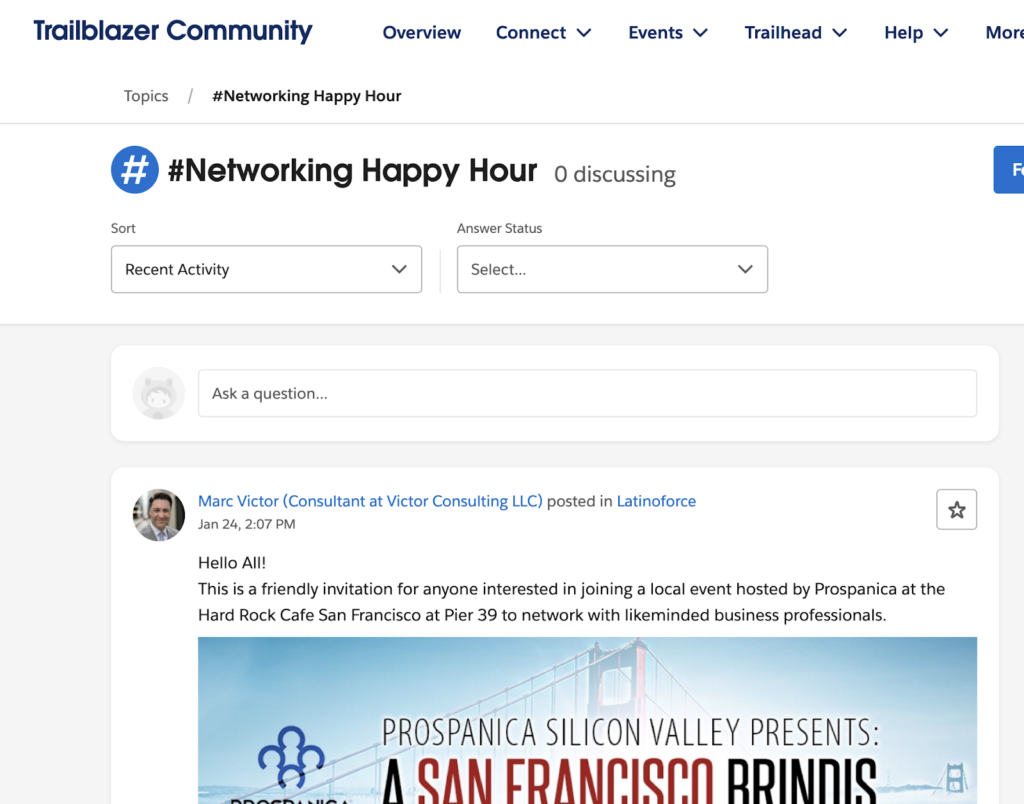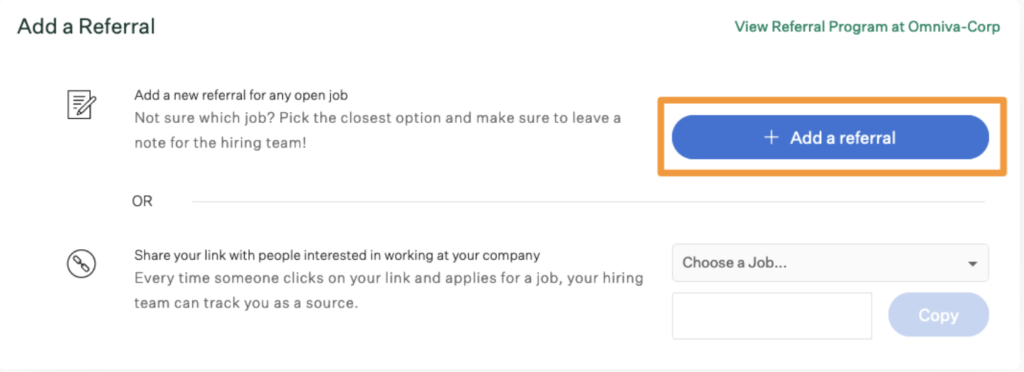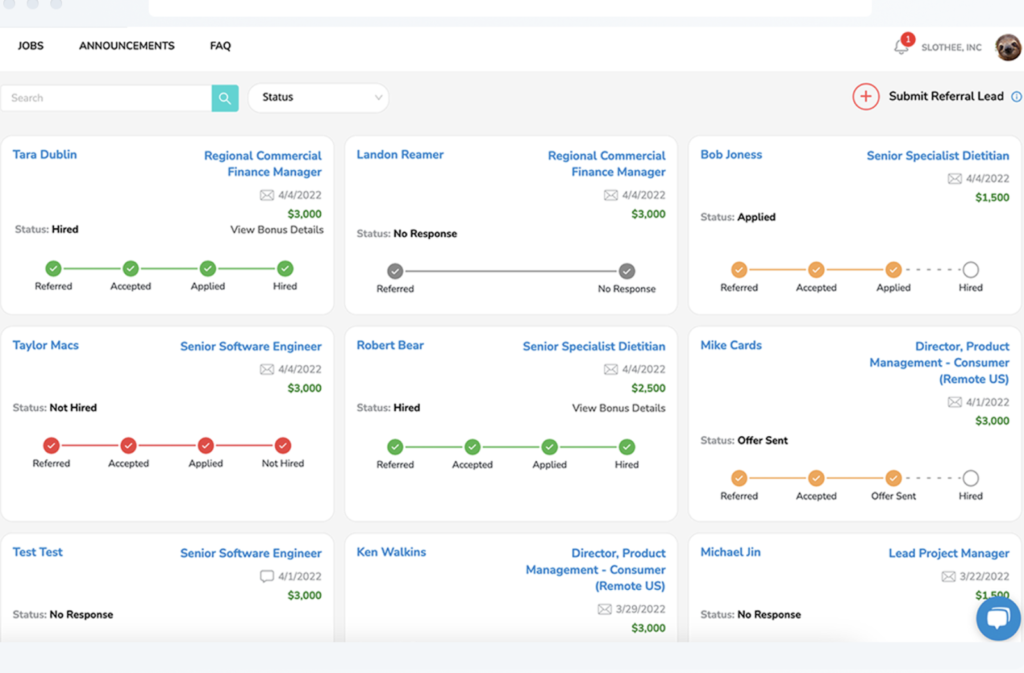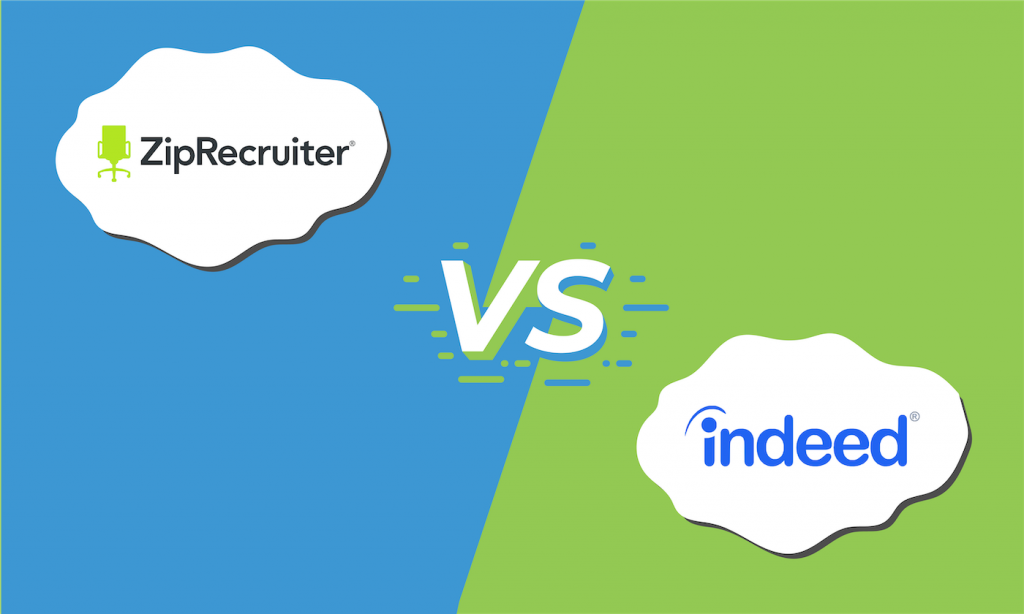Key takeaways
I’ve been researching and writing for the HR tech industry for the last four years, specifically focusing on how companies create more employee-centric work experiences. I have also worked in an organizational setting on the employee side, where I experienced employee referral processes that were often disorganized and bias-prone. But I also know how powerful they can be for finding top talent. That’s why I not only highlight the pros and cons in this article, but I also outline steps every organization can follow to make their own referral processes smoother and, ultimately, fairer for all participants.
What is an employee referral?
An employee referral is a recruitment approach in which a current team member with a company recommends someone as a candidate for an open position. They might recommend a former colleague, an acquaintance, or someone in their professional network.
To make this process more efficient, organizational leaders often set up an employee referral program to incentivize more recommendations. For instance, they might offer employee bonuses or additional perks like extra PTO for team members who refer successful candidates. If they have more positions to fill, they might also gamify the process or use recognition platforms to celebrate successful referrals publicly.
The benefits of employee referrals
The great thing about posting an open position to a job site like Indeed or LinkedIn is that the company gets plenty of eyes on its job descriptions. But this also means recruitment teams will end up reading and screening hundreds and even thousands of resumes and applications.
If that’s the boat you’re company is currently in, let’s take a look at some of the benefits of employee referrals:
Employee referrals help recruitment teams pull from a broader and more diverse well of applicants that haven’t gotten lost in the ATS maelstrom. It also allows you to attract passive candidates or those professionals who aren’t actively looking for a job but are open to the right opportunity.
62% of companies have decreased their average time to fill for referred employees. As Callum Borchers and Lindsay Ellis write in their collaborative article for WSJ, “Who-you-know-networking is back.” Why? Hiring teams are overwhelmed with the hundreds of applications they receive via networking sites and job postings, even if they use applicant tracking systems (ATSs) to scrape applications for relevant keywords and narrow down the number of candidates recruiters have to review.
Referrals not only help recruitment teams save the money they would spend on traditional recruitment strategies, but they can also make it easier to find candidates with a longer employee lifecycle.
47% of employees drop out of the application process due to poor communication. Employee referral programs can help you overcome this, giving applicants more direct access to the recruiters and HR teams that design these programs.
The challenges of employee referrals
Despite employee referrals’ significant advantages, they can also present a few drawbacks when you’re not designing your referral program thoughtfully. Common reasons why companies may choose not to use referrals include:
- Potential for unconscious bias and favoritism: If you don’t vet referrals carefully, you risk candidates receiving preferential treatment if they have existing relationships with current team members.
- Difficulty in maintaining your referral program: For smaller companies, the administrative burden might be too much for your hiring and HR team to manage in addition to their regular recruitment efforts.
- Risk of shrinking the talent pool: Relying exclusively or too heavily on referrals means you might miss out on great candidates who use traditional means to apply for your open position.
How to set up an employee referral program
Companies design employee referral programs to systematize their referral efforts and make recommending candidates fairer and more transparent. Below are the steps I recommend when starting your own referral program.
1. Determine your objectives
Collaboration leads to greater clarity about objectives, so the best place to start your referral program is to hold planning sessions with key stakeholders. You can include senior leadership, HR teams, recruitment teams, and department heads to ensure your program aligns with your overall business goals. Cross-functional collaboration also allows for different perspectives and needs across your organization.
Together, you should determine what you hope to achieve with your referral program, which could include goals like:
- Speeding up the hiring process.
- Improving candidate quality.
- Enhancing diversity.
- Reducing recruitment costs.
- Increasing retention and engagement rates.
You can also roughly outline the structure of the program, answering questions like:
- Who will manage the program?
- Which roles are eligible for referrals?
- How will we track referrals?
- How will we measure success?
- How do we reward employee referrers?
2. Create an employee referral policy
Why should you create a referral policy before you develop any other related initiatives? An employee referral policy establishes clear expectations and criteria for your referral program. It also lays out who’s eligible for referral and how team members can earn incentives.
Your referral policy should include elements like:
- Eligibility criteria.
- The goals for your referral program.
- Your referral submission process.
- Guidelines for evaluating referrals.
- A non-discrimination clause.
- The referral bonuses and incentives you’ll offer.
- The tracking and feedback system you’ll follow.
- Your system for promoting and communicating the program within your company.
- Strategies for evaluating and refining the program over time.
Your referral policy helps recruitment teams ensure that employees make candidate recommendations based on fairness, considering criteria like skills and talents over how well the job seeker will “fit” within your company’s culture. It also gives recruitment teams peace of mind that all team members follow the same procedure when referring friends, former coworkers, or professionals from their network.
A clear policy means a greater chance of success
I used to work for an organization that encouraged employee referrals, but they had no dedicated policy. The result? I recommended an acquaintance from my network who I thought could do the job and contribute to making our workplace more diverse and inclusive—and this person didn’t get the role. While I disagreed with the decision, I would have benefited tremendously from a clear referral policy that not only allowed me to prepare the candidate better but also gave me a better understanding of the expectations for the role.
The moral of my story is: Referral participants need clear guidelines outlining what success looks like for a particular role so they don’t risk disappointing themselves and the applicant involved. While risk is inherent to the process, working from a transparent referral policy also makes hiring more efficient.
Learn how to create a strong employee referral policy from our integrated network of business resources. Read: How to Create an Employee Referral Program [+ Free Template]
3. Get creative about incentives for participants
Whether you want to gamify your program or keep it super simple, you can offer a variety of creative incentives like:
- Cash bonuses.
- Extra PTO.
- Company-wide recognition.
- Unique perks like trips and certificates.
- Tiered referral bonuses.
- Time off to volunteer.
- Donations to the employee’s charity of choice.
Until the end of 2024, TechnologyAdvice is running its “golden ticket” referral program, where employees receive double the normal bonus amount for every candidate they refer who’s successfully hired. Plus, every referral gives them one entry in a grand prize! It’s been successful, but there are other ways to go about incentives that may better fit your company’s mission and ethos.
For instance, Salesforce hosts regular Recruitment Happy Hours, which are informal get-togethers where team members can invite the people they want to refer. And it’s been successful, too: Salesforce has paid out $5.5 million worth of recruitment bounties. You can also follow Fiverr’s example: Company leaders decided to use Zao, which is software that helps you streamline employee referrals. With Zao, Fiverr employees can track points and credits for any referral actions they took.

4. Implement a tracking system to monitor referrals
Monitoring employee referrals can seem intimidating because many recruiters and hiring managers don’t know you can also use an ATS to track them. Instead, they might use a confusing system of email tags and spreadsheets to log referrals, which leads to too many promising candidates getting lost in the admin matrix.
The good news is that many ATSs let you track referrals alongside candidates who apply via traditional means. For instance, you can use recruiting software like Greenhouse ATS to track referred applicants. You can also integrate employee referral software like ERIN with your current recruiting software.
5. Review and refine
Another reason to use a dedicated ATS or similar platform for referrals is that it allows you to gather the data you need to improve your program. I recommend reviewing your data for the first few months after implementing referrals so you can identify glaring issues as soon as possible.
To fully understand how well your referral program is working, look into data like:
- Quantitative metrics: These can include specific KPIs like number of hires through the referral program, employee participation rates, retention rates of referred candidates compared to other pipelines, referred employee performance metrics, time-to-hire, and cost savings.
- Referrer and referred candidate insights: Ask for all participants to share their thoughts about the experience, specifically digging into ease of participation, input on incentives, and suggestions for improvements.
- Incentive effectiveness: Determine which rewards have been most motivating for program participants, either via survey or by asking them directly.
- Impact on diversity and inclusion: Has your program allowed you to hire more candidates from diverse backgrounds, or is it putting you on track to hit your diversity and inclusion goals?
- Benchmarking data: Compare how well your program works against those of your industry competitors.
Not sure what metrics to track? Here are the Essential Recruiting Metrics You Need to Be Tracking in 2024.
Employee referrals FAQs
The potential for bias isn’t the only possible pitfall in referral programs. Here are a few other oversights companies make when trying to get their program off the ground:
- Lack of engagement incentives: If you only reward participants for candidates who get hired, you risk demotivating those who haven’t yet had success. That’s why you should reward employees who engage with your program in any way by creating a tiered system in which those who make a recommendation or promote your company earn points and smaller prizes.
- Taking a one-size-fits-all approach: It’s often harder to find candidates for more technical disciplines, such as engineering or data science. That’s why you should consider adjusting incentives for jobs that take more time to fill.
- Not enough communication and transparency: It’s important to set clear expectations about the referral process upfront so participants don’t waste their time recommending candidates who aren’t a good fit. It’s also essential to inform both referrers and job seekers about their application status.
- Neglecting to train employees on your referral process: Training employees is especially important if you’re using an ATS or other software to track referrals. Employees who feel the process is too complicated or inaccessible are less likely to participate.
You can get more employee referrals by creating a dedicated referral program that incentivizes employees to participate. Within that framework, you can also get more referrals by:
- Offering a mix of incentives: Use both monetary and non-monetary rewards to motivate employees.
- Promote the program regularly: Publicly recognize employees who make successful referrals. You can use creative methods like shout-outs in meetings and leaderboards for top referees.
- Simplify the process: You can use referral or recognition software to streamline employee referrals so they require minimal manager involvement.
- Ask employees about people from their network: For example, you can ask employees questions like, “Who’s the best developer/seller/marketer/project manager you know?”
Employee referrals are crucial recruitment strategies for organizations, especially those looking to scale quickly. When thoughtfully designed, they offer benefits like:
- Higher quality candidates.
- Faster time-to-hire.
- Increased retention rates.
- Cost-effectiveness.
- Enhanced diversity and inclusion.
- Improved employee engagement.
- Stronger employer branding.







